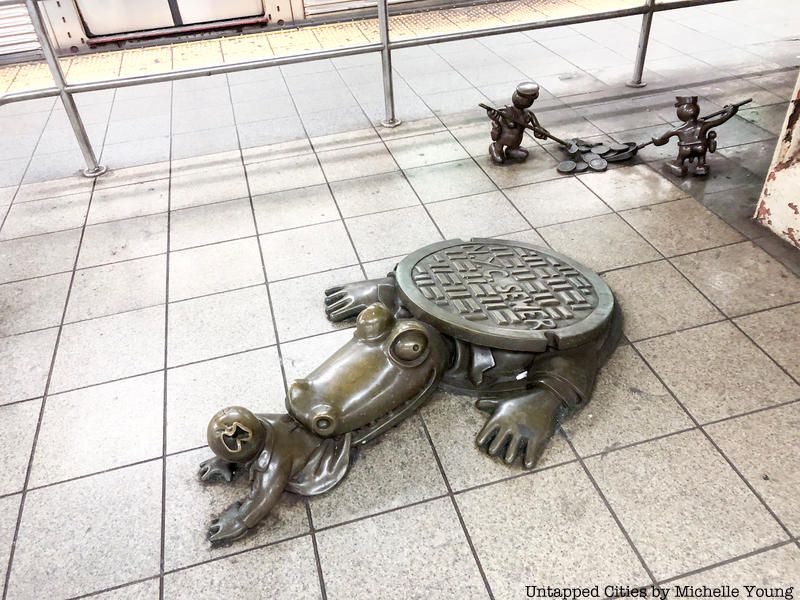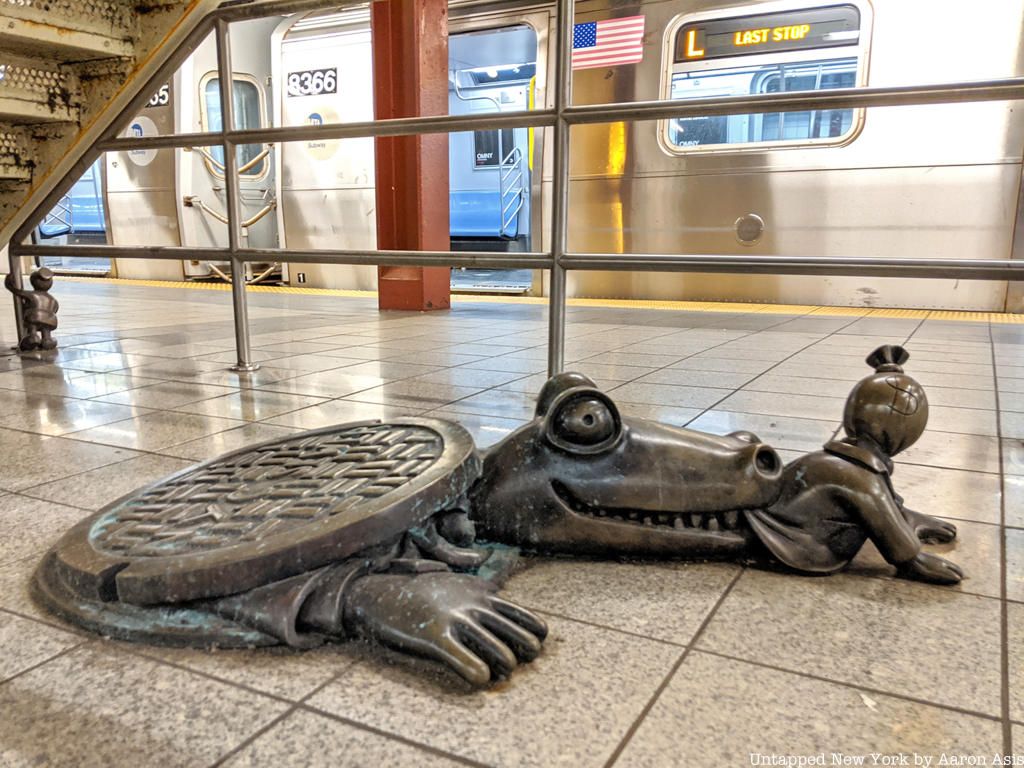100th Anniversary Great Nave Tour at the Cathedral of St. John the Divine
Celebrate the 1925 construction of the stunning nave inside the world's largest Gothic cathedral!


New York City has long had a fascination with alligators in the sewer. The “legend” has been referenced across popular culture from a Thomas Pynchon book to movies like Sharknado 2. There is a bit of historical truth to this tall tale. New York City has been — and still could be — home to an alligator or two in its vast sewer system. We explored the myth of sewer alligators with Wild City author Tom Hynes back in 2021. You can enjoy a recording of our talk with Tom in the video below. This talk is just one of over 150+ on-demand videos available in our Untapped New York Insiders archive which is available to all Untapped New York Insiders.
The legend of sewer alligators is a major aspect of New York City mythology. Their origin story is as follows: Wealthy families who vacationed in warmer climates would return to New York City with baby alligators as souvenirs. Those “pets” would eventually grow too big and be flushed down the toilet. Once they hit the sewer system, the legend continues, they grew to full-size alligators who roamed the murky waters of the city sewers, feasting on the city’s rats. The legend imagines a system teaming with vicious reptilian predators. This story is half true. Families did bring back alligators as pets, and you could even order them in the mail. In the 1930s, advertisements in popular magazines sold baby alligators for as little as a $1.50.
One of the earliest reported sightings of a sewer alligator hit the New York Times in 1907, but the legend really took off in the 1930s. Around that time, actual alligators began making appearances around the city. In June 1932, two boys brought a dead three-foot alligator to the Bronx River Parkway Police, alleging that at least three more alligators were alive at the river. A hunting expedition ultimately found no traces of additional alligators.

On February 10, 1935, The New York Times reported on a 7-foot, 125-pound alligator that turned up in the sewers near 123rd Street in Harlem. Some neighborhood boys were shoveling snow into a manhole when they came across the diseased alligator. The boys attached a slip knot around the massive creature and pulled it from the sewer. The Times article didn’t have any photographs, but a photo did appear in an article in the Daily News.
Robert Daley’s 1959 nonfiction book The World Beneath the City recalls a story told to him by New York City’s superintendent of sewers, Teddy May. For years, May heard rumors of alligator congregations from his employees, yet he suspected these to be legends. However, one night on a search for these creatures, he detected “alligators serenely paddling” and a colony that “appeared to have settled contentedly under the very streets of the busiest city in the world.” “Rat poison” and “.22 rifles” were supposedly used on these alligator hunts, although there is little evidence to back up May’s claims.
As recently as August 23, 2010, witnesses in Queens reported seeing an 18-inch alligator. The mystery was resolved when it was reported that the alligator had fallen from a ship and dragged itself from the East River toward residents. Most alligator sightings end this way, with a simple explanation for where the creature came from, or the safe assumption that it is an escaped pet.

Allusions to sewer alligators can be seen at the 14th Street station on the 8th Avenue line. Tom Otterness’ art installation “Life Underground” depicts various scenes including an alligator reaching out from underneath a manhole cover to snatch a man for dinner.
The legend of sewer alligators has become so entrenched in New York City’s story that there is an unofficial Alligators in Sewers Day on February 9th. The date commemorates the incident mentioned earlier of a group of neighborhood boys discovering a 7-foot alligator in Harlem. The holiday to celebrate the birth of the sewer alligator legend was initiated by former Manhattan Borough Historian Michael Miscione on the 75th anniversary of the incident in 2010. Miscione was skeptical of the account at first, but after reviewing the evidence, decided it is true. Miscione has also campaigned to have a park near where the incident occurred renamed “Sewer Gator Park,” or “Alligator in the Sewer Park,” or simply “Alligator Park.”
Check out the full story of sewer alligators in Tom’s talk above and discover more talks about New York City animals in our Untapped New York Insiders Video archive! Tom’s book, Wild City, explores 40 animals who share our urban environment. You can access more than 150 other fascinating talks available for free and on-demand to all Untapped New York Insiders by becoming a member today! Get your first month free with code JOINUS.
Next, learn about the Boogie Down Beavers of NYC’s Bronx River!
This article was written by Noah Sheidlower and updated by Nicole Saraniero in February 2023.
Subscribe to our newsletter